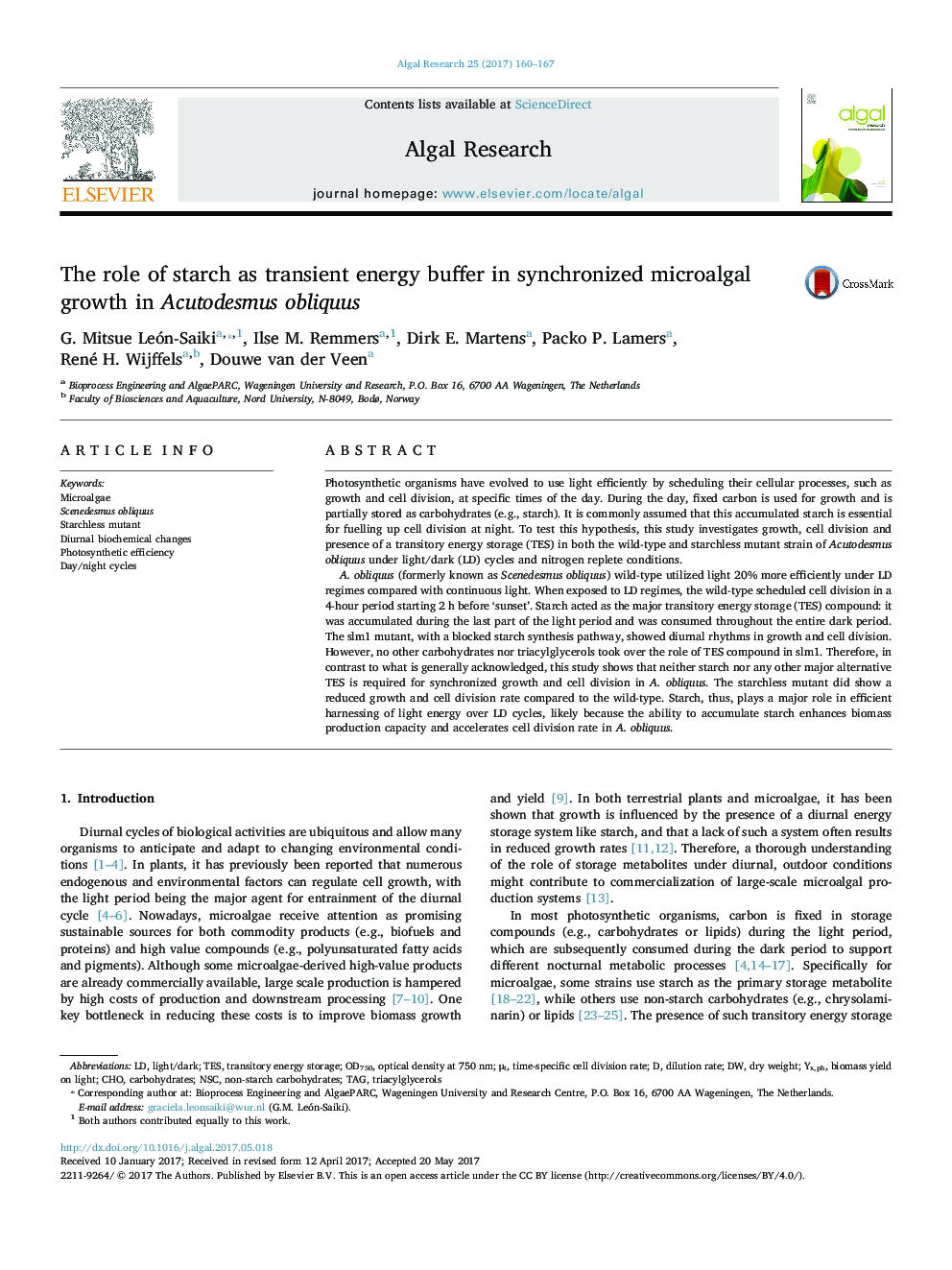| Article ID | Journal | Published Year | Pages | File Type |
|---|---|---|---|---|
| 5478359 | Algal Research | 2017 | 8 Pages |
Abstract
A. obliquus (formerly known as Scenedesmus obliquus) wild-type utilized light 20% more efficiently under LD regimes compared with continuous light. When exposed to LD regimes, the wild-type scheduled cell division in a 4-hour period starting 2Â h before 'sunset'. Starch acted as the major transitory energy storage (TES) compound: it was accumulated during the last part of the light period and was consumed throughout the entire dark period. The slm1 mutant, with a blocked starch synthesis pathway, showed diurnal rhythms in growth and cell division. However, no other carbohydrates nor triacylglycerols took over the role of TES compound in slm1. Therefore, in contrast to what is generally acknowledged, this study shows that neither starch nor any other major alternative TES is required for synchronized growth and cell division in A. obliquus. The starchless mutant did show a reduced growth and cell division rate compared to the wild-type. Starch, thus, plays a major role in efficient harnessing of light energy over LD cycles, likely because the ability to accumulate starch enhances biomass production capacity and accelerates cell division rate in A. obliquus.
Keywords
Related Topics
Physical Sciences and Engineering
Energy
Renewable Energy, Sustainability and the Environment
Authors
G. Mitsue León-Saiki, Ilse M. Remmers, Dirk E. Martens, Packo P. Lamers, René H. Wijffels, Douwe van der Veen,
